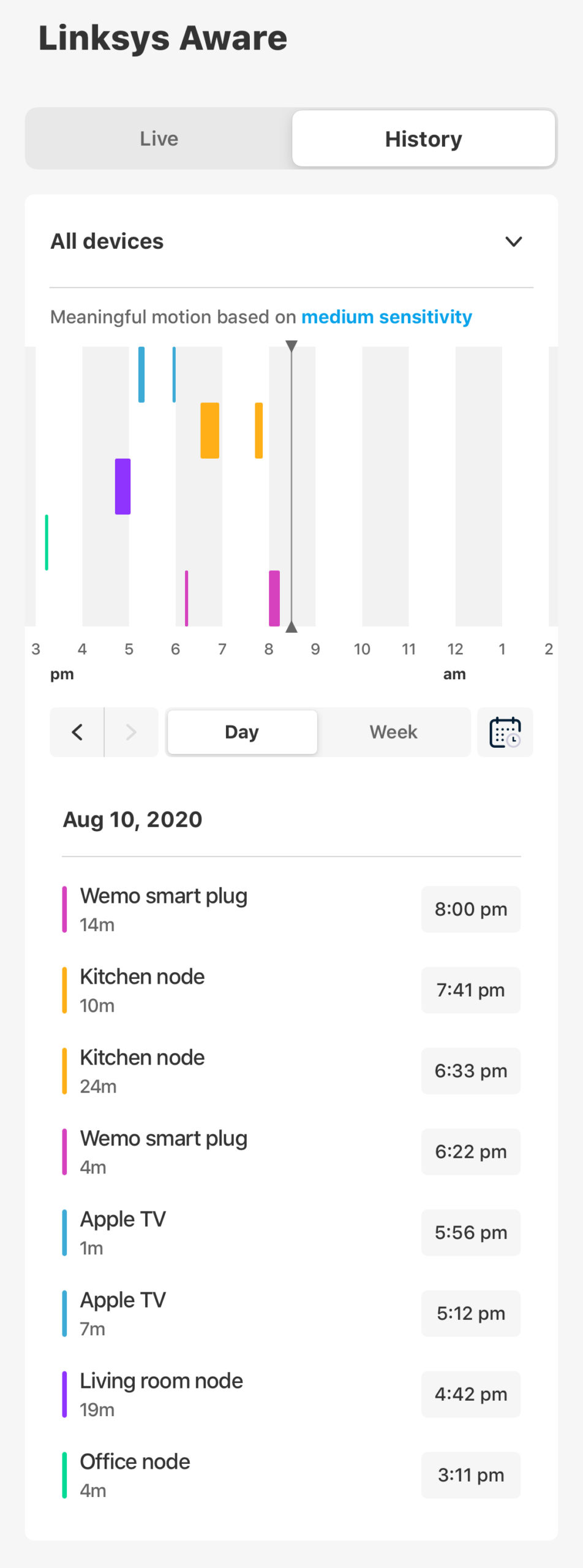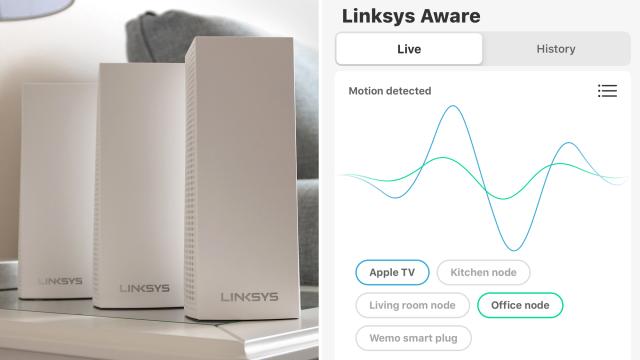Over the next decade the smarthome as we know it is going to change dramatically thanks to technologies like Linksys Aware that turns a Wi-Fi network into a motion detector that watches every corner of your home. The tech is still in its infancy, but Linksys has announced a major update that leverages IoT devices to improve its accuracy.
We first tested Linksys Aware back in late 2019 and at the time the technology was more exciting for its potential than what the feature could actually do at rollout. Based on research that dates back to 2013 and earlier, Linksys Aware actively measures the signal strength of the invisible radio waves beaming back and forth between the nodes of a mesh Wi-Fi setup in a home. When those radio waves are obstructed, like when a person walks between two nodes, the drop in signal strength can be measured and used as a makeshift motion detector giving a home a basic security system without needing to install any additional hardware.

It’s a fascinating use of existing technology, but in its current form the Linksys Aware service can only tell you that motion was detected in your home, not where the flagged event occurred. As a result, it’s too vague to be of much practical use, particularly when a dedicated home security system can alert you to problems in individual rooms, or when specific doors and windows have been opened.
But sometime in early 2021, Belkin will be releasing an update for its Linksys Aware service that expands its connectivity to almost every Wi-Fi-connected IoT device in your home. While previously limited to the nodes of a Linksys mesh router setup, Linksys Aware will soon be able to use everything from smart speakers, to video doorbells, to thermostats, to even TV streaming boxes to improve the accuracy of its motion detection. It still won’t be able to issue alerts like “there’s motion detected in your upstairs master bedroom,” but after the update, those alerts will include more details about what devices were closest to detected movements.
In the Linksys app users will be able to ensure that all of their connected devices have a nickname they recognise (like upstairs Google Nest Mini versus downstairs Google Nest Mini) that should make it easier to decode, at a glance, where detected motions have occurred. It still puts a lot of the responsibility of decoding a Linksys Aware alert on the user, and it means that the service still can’t be configured with highly customised alerts such as “only warn me when motion is detected in the basement.” But it’s still a welcome upgrade and one that continues to slowly reveal the real potential of this technology. One day Belkin envisions Linksys Aware as being a tool that could keep tabs on the specific health of everyone in a home by covertly monitoring heart rates and breathing patterns, but we’re still quite a few years away from that right now.
New users with a Linksys mesh Wi-Fi product (you need at least two nodes for it to work and Linksys has yet to introduce the feature on its Wi-Fi 6 products) can try Linksys Aware for free for 90 days, after which the updated service will retain the same subscription prices of $US3 ($4)/month or $US25 ($32)/year.
Editor’s Note: Stay tuned for local Australian pricing and availability.
